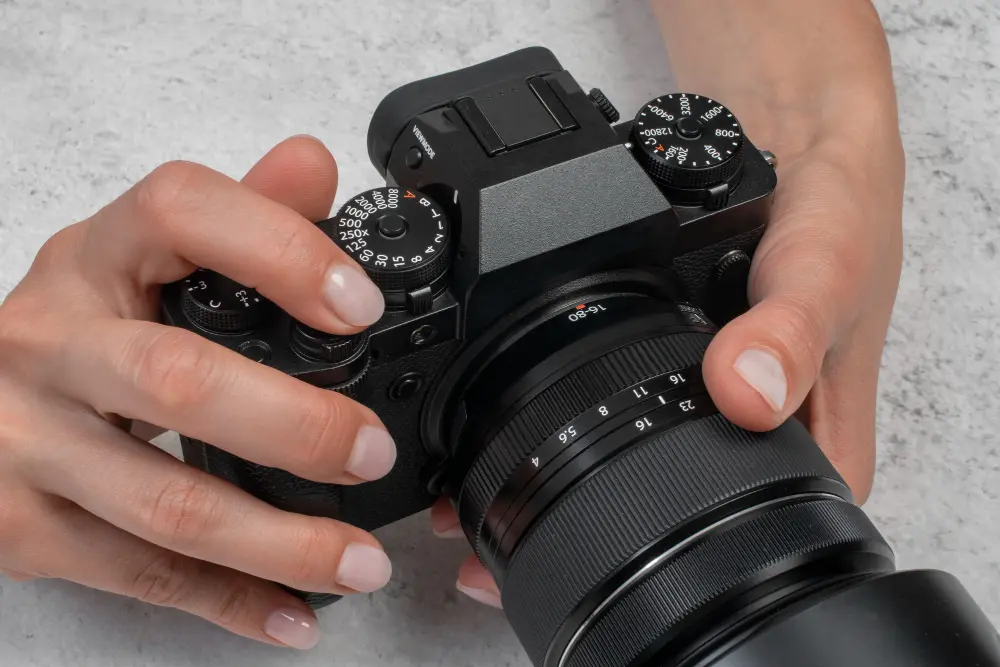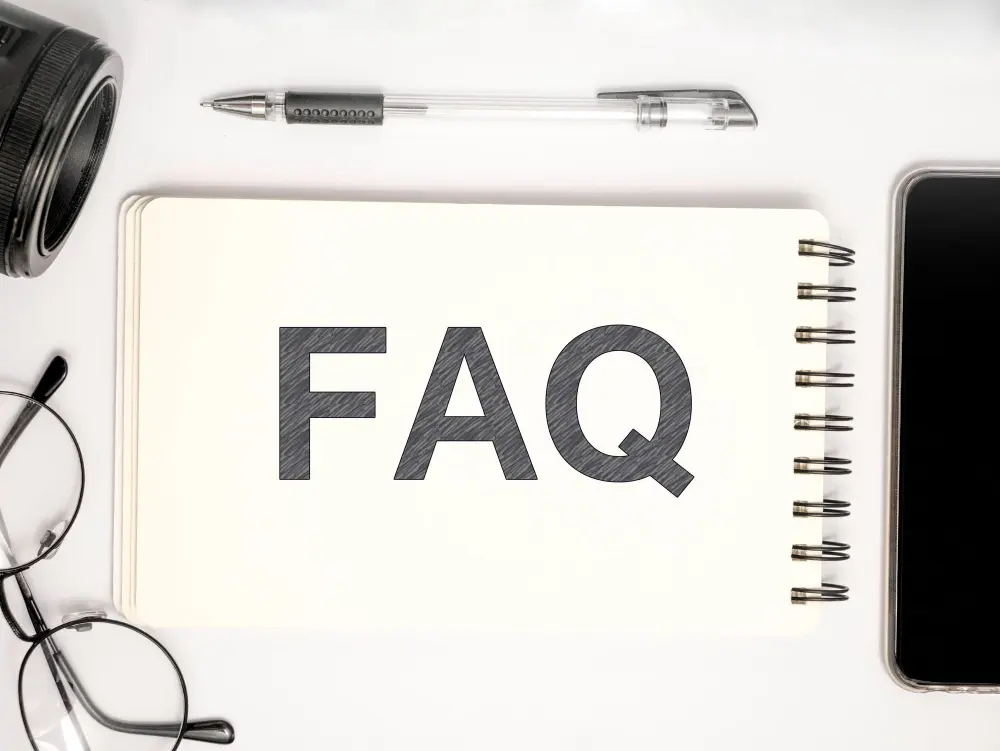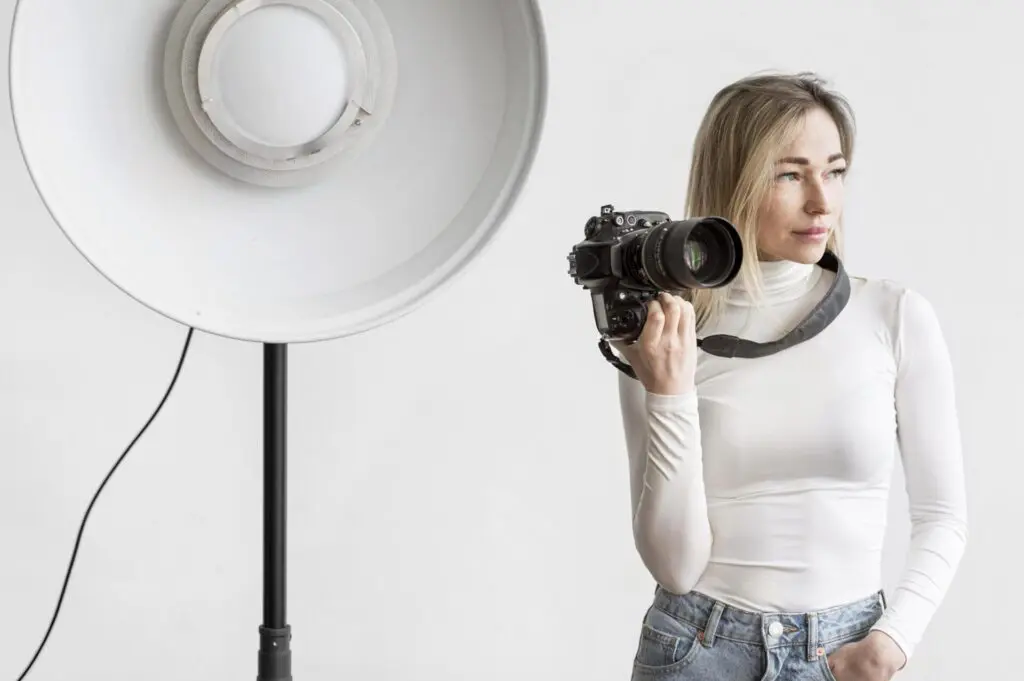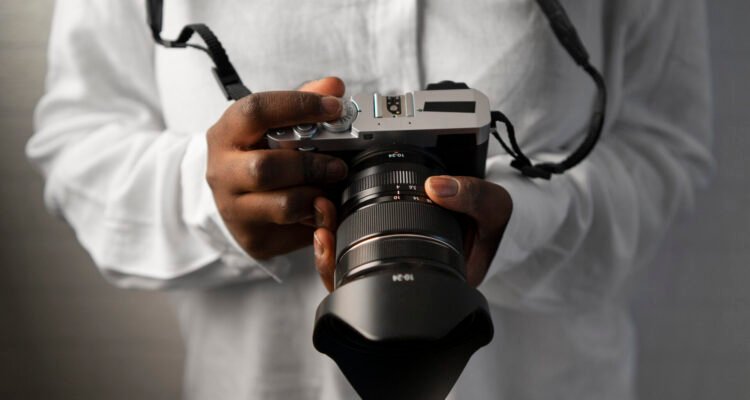Explore the unexpected factors that impact photographer salary. Understand how industry trends, specialized skills, geographical…

Photographers 101: A Beginners Guide to Photography 2024
A definitive guide in starting your photography profession. Photography is the most effective way to capture the world – what with the power of social media and other online platforms to deliver messages and information through images. If you want to learn the photography basics, here’s a free complete guide to help you get started.
Photography is the art of capturing light with a camera, usually via a digital sensor or film, to create an image. With the right camera equipment, you can even photograph wavelengths of light invisible to the human eye, including UV, infrared, and radio.
The essential purpose of photography is communication. Pictures are a photographer’s means of expression as a writer’s means are words.
Photography Camera Settings
ISO
The acronym ISO stands for “International Standards Organization. It is one of the three pillars of photography, along with shutter speed and aperture, and it has a major effect on your images.
In photography, the ISO measures the sensitivity of the image sensor – the lower the number, the less sensitive your camera is to light and the finer the grain. As you increase the ISO, the sensor becomes more sensitive to light, which allows it to capture more light without slowing down the shutter speed or opening up your aperture.
Every camera has a different range of ISO values that you can use. A common set is as follows:
- ISO 100 (low ISO)
- ISO 200
- ISO 400
- ISO 800
- ISO 1600
- ISO 3200
- ISO 6400 (high ISO)
In setting your ISO, you should always try to stick to the lowest ISO of your camera, which is typically ISO 100 or 200, whenever you can. If there is plenty of light, you are free to use a low ISO and minimize the appearance of noise as much as possible.
Quick Note: In photography, “noise” is the commonly used term to describe visual distortion.
Aperture
Aperture, belonging to the three pillars of photography, is the most important. In photography, aperture is called the “pupil” of your lens. It highly affects the brightness or exposure of your images.
Aperture can be defined as the opening in a lens through which light passes to enter the camera. It is expressed in f-numbers like f/1.4, f/2, f/2.8 and so on to express the size of the lens opening, which can be controlled through the lens or camera.
A bigger aperture hole lets your camera sensor gather more light, which it needs to produce quality images. Choose a larger aperture (f/2.8 f/4, etc.) for minimal depth of field and more light filters into the lens, causing your shutter speed to increase.
In combination with variation of shutter speed, the aperture size will regulate the image sensor’s degree of exposure to light. Most professional photographers, portrait and wedding photographers in particular, choose to use aperture priority mode for the ease to control depth of field.
Quick Note: Aperture priority mode is an upgrade from automatic mode. When you switch to this mode, you let the camera do most of the work for you (adjusting your aperture, ISO, white balance, and shutter speed all at once).
Shutter Speed
Shutter speed, as one of the three pillars of photography, is responsible for two particular things: changing the brightness of your photo, and creating dramatic effects by either freezing action or blurring motion.
Shutter speed is a measurement of the time the shutter is open, shown in seconds or fractions of a second: 1 s, 1/2 s, 1/4 s … 1/250 s, 1/500 s, etc. In other words, the faster the shutter speed, the easier it is to photograph the subject without blur and “freeze” motion, and the smaller the effects of the camera shake. When shooting a moving subject, a slow shutter speed setting results in a blurry subject, emphasizing its motion.
The average camera speed is usually 1/60. Speeds slower than this are hard to manage as they mostly lead to blurry photographs. The most common shutter speed settings available on cameras are:
- 1/500
- 1/250
- 1/125
- 1/60
- 1/30
- 1/15
- 1/8, and so on.
When you press the button on a camera and hear a distinctive click, you’re hearing the sound of the camera’s shutter opening and closing in a fraction of a second. Simply put, the shutter speed allows light to pass for a determined period to capture a permanent image of a scene.
Exposure
In photography, exposure is the amount of light which reaches your camera sensor or film. It is a crucial part of how bright or dark your pictures appear. Shutter speed, aperture, and ISO constitute the exposure triangle that affect the exposure of an image.
Setting the right exposure on your camera can make a big difference in how your photographs would turn out. The more you expose the film or camera sensor to light, the lighter your photo will be. The less light, the darker your image will be.
Tinkering with the shutter speed, aperture, and ISO settings will produce four types of exposure:
- Matrix Metering (Nikon) or Evaluative Metering (Canon): This is the default metering mode on most DSLRs. It is used to measure the brightness and color of the subject.
- Center-weighted Metering: It evaluates the light in the middle of the frame and its surroundings, and ignores the corners. In short, it measures the exposure of your subject.
- Spot Metering: It is where the camera determines a proper exposure not on the average brightness levels of the whole frame, but just of one specific spot. This is best used for landscape photography.
The use of metering modes really depend on your type of photography. In general, the matrix or evaluative metering is the best mode to leave your camera in.
Depth of Field
Depth of Field (DoF) is one of the most important concepts in photography. Understanding what DoF is, and knowing what factors affect it, are things all photographers should master.
Depth of Field is the distance between the closest and farthest objects in a photo that appears acceptably sharp. It is the front-to-back zone of a photograph. A shallow depth of field is good for focusing on an option that is closer to your camera. On the other hand, deep depths of field are best for landscapes.
Depth of Field is governed by three factors: aperture, lens focal length and shooting distance. Understanding what factors affect the depth of field in a photograph will give you the artistic freedom to make the images you want to create.
This photography concept is important because it indicates the largest amount of light that the lens will transmit through the film “hiding” behind the camera shutter. Take time to experiment with your camera and get to know it better. You will learn the most from practicing.
Image Sensor
An image sensor is a device used primarily in standalone or embedded digital cameras and imaging devices. It is a solid-state device, the part of the camera’s hardware that captures light and converts what you see through a viewfinder or LCD monitor into an image.
The solid-state image sensor chip contains pixels which are made up of light sensitive elements, micro lenses, and micro electrical components. The larger the sensor, the greater the surface area, the more light it will catch. Cameras with high image sensors produce more detailed and better quality photos.
The truth is that it’s always going to be a balancing act between the efficiency of sensor technology, lens quality, image sensor size and ultimately what you want to do with your photographs. Most DSLRs whether from Canon or Nikon use either an APS-C (22.2 x 14.8 mm or 23.5-23.7 x 15.6 mm) or a Full Frame (36 x 24 mm) sensor.
Frequently Asked Questions
What are the best camera brands ?
The “best” camera brand can vary depending on individual needs, preferences, and the specific type of photography one engages in. However, several camera brands are widely recognized for their quality, innovation, and performance across different categories. Here are some of the top camera brands:
-
Canon: Canon, A globally recognized camera brand, offers a diverse range of cameras, from entry-level DSLRs to high-end professional models, known for their exceptional image quality and reliability.
-
Nikon: Nikon, A top camera manufacturer, is renowned for its high-quality DSLRs and mirrorless cameras, attracting both amateur and professional photographers due to their robust build quality and advanced features.
-
Sony: Sony’s Alpha series mirrorless cameras, known for their compact size, excellent image quality, and advanced technology, have significantly impacted the camera market.
-
Fujifilm: Fujifilm’s X-series mirrorless cameras are renowned for their high-quality image, film simulations, and tactile controls, attracting both enthusiasts and professionals.
-
Panasonic: Panasonic offers a range of cameras, including mirrorless and compact models, known for their Lumix series, which is renowned for its excellent video capabilities and strong build quality.
-
Olympus: Olympus cameras are known for their compact size, lightweight design, and advanced features, with the OM-D series mirrorless cameras being popular among photographers for portability without compromising image quality.
These are just a few of the top camera brands in the market, and each has its own strengths and weaknesses. When choosing a camera brand, it’s essential to consider factors such as your budget, intended use, desired features, and personal preferences.
What are the best photo editing software to use?
Summary
- Overexposure: It happens when the camera sensor is exposed to too much light resulting to a washed out photograph.
- Underexposure: It happens when the camera sensor is not exposed to enough light resulting to an almost all black photograph.
- Long exposure: It is a technique where a subject is captured over an extended period of time resulting to blurs, smears, and trails. This is commonly used in night photography.
- Double exposure: It is a technique where the camera is exposed to different images resulting to a combined two exposures into a single image, which are laid on top of one another.
Histograms
A histogram is a graphical representation of the tonal values (black-0% brightness to white-100% brightness) of your image. It is important to understand a histogram because it tells you if an image is too dark or too bright.
Understanding the histogram will help you capture more balanced images. Histogram is exposure-dependent, but is also affected by tone curve and other settings. There are usually two cases in a histogram analysis:
- Highlight clipping: This represents areas that are completely white and absent detail. Highlight clipping occurs if the graph is touching the right side of histogram.
- Shadow clipping: This represents areas that are completely black and absent detail. Shadow clipping occurs if the graph is touching the left side of histogram.
Either cases can be fixed by altering exposure settings. However, you must remember that it all depends on the scene – whether your image requires too much light, too much darkness, or something in between.
White Balance
White balance is used to adjust colors to match the color of the light source so that white objects appear white. Subjects may be lit by a number of different light sources: including sunlight, incandescent bulbs, and fluorescent lighting in some scenes.
The purpose of white balance is to eliminate the discoloration in an image due to certain colors in the scene having more intensity and higher or lower “temperature.” Blue light has a high color temperature and red light has a low color temperature.
Using the right white balance setting will eliminate unwanted color casts that can ruin your image and make it appear unnatural.
In choosing a white balance preset, apply a cooler color temperature for warm light settings, and warmer color temperatures for cooler light settings. Your white balance setting can be accessed either in your camera’s menu system or using a dedicated button labelled “WB” on your camera’s body.
Focal Length
The focal length of the lens is the distance between the lens and the image sensor when the subject is in focus, usually stated in millimeters (e.g. 28 mm, 50 mm, or 100 mm). In the case of zoom lenses, both the minimum and maximum focal lengths are stated, for example 18-55 mm.
Differences in an image arise because the focal length is getting longer (zooming in) as the camera moves further away from the subject. Remember, the distance from the subject is changing the perspective.
Focal length is important in photography because it determines the angle of view. The shorter the focal length, the more subject area fits in the frame. Increasing focal length narrows the angle of view and makes your subject appear closer and larger.
Wide angle lenses are great for capturing large vistas, including landscape and architecture. For portraiture, 50 mm standard lens is the perfect focal length.
Metering Mode
Metering is how your camera determines what the correct shutter speed and aperture should be, depending on the amount of light that goes into the camera and the ISO.
Knowing how metering works and what each of the metering modes does is important in photography. It helps photographers control their exposure with minimum effort and take better pictures in unusual lighting situations.
The most common metering modes in digital cameras today are:
- Matrix Metering (Nikon) or Evaluative Metering (Canon): This is the default metering mode on most DSLRs. It is used to measure the brightness and color of the subject.
- Center-weighted Metering: It evaluates the light in the middle of the frame and its surroundings, and ignores the corners. In short, it measures the exposure of your subject.
- Spot Metering: It is where the camera determines a proper exposure not on the average brightness levels of the whole frame, but just of one specific spot. This is best used for landscape photography.
The use of metering modes really depend on your type of photography. In general, the matrix or evaluative metering is the best mode to leave your camera in.
Depth of Field
Depth of Field (DoF) is one of the most important concepts in photography. Understanding what DoF is, and knowing what factors affect it, are things all photographers should master.
Depth of Field is the distance between the closest and farthest objects in a photo that appears acceptably sharp. It is the front-to-back zone of a photograph. A shallow depth of field is good for focusing on an option that is closer to your camera. On the other hand, deep depths of field are best for landscapes.
Depth of Field is governed by three factors: aperture, lens focal length and shooting distance. Understanding what factors affect the depth of field in a photograph will give you the artistic freedom to make the images you want to create.
This photography concept is important because it indicates the largest amount of light that the lens will transmit through the film “hiding” behind the camera shutter. Take time to experiment with your camera and get to know it better. You will learn the most from practicing.
Image Sensor
An image sensor is a device used primarily in standalone or embedded digital cameras and imaging devices. It is a solid-state device, the part of the camera’s hardware that captures light and converts what you see through a viewfinder or LCD monitor into an image.
The solid-state image sensor chip contains pixels which are made up of light sensitive elements, micro lenses, and micro electrical components. The larger the sensor, the greater the surface area, the more light it will catch. Cameras with high image sensors produce more detailed and better quality photos.
The truth is that it’s always going to be a balancing act between the efficiency of sensor technology, lens quality, image sensor size and ultimately what you want to do with your photographs. Most DSLRs whether from Canon or Nikon use either an APS-C (22.2 x 14.8 mm or 23.5-23.7 x 15.6 mm) or a Full Frame (36 x 24 mm) sensor.
Frequently Asked Questions
What are the best camera brands ?
The “best” camera brand can vary depending on individual needs, preferences, and the specific type of photography one engages in. However, several camera brands are widely recognized for their quality, innovation, and performance across different categories. Here are some of the top camera brands:
-
Canon: Canon, A globally recognized camera brand, offers a diverse range of cameras, from entry-level DSLRs to high-end professional models, known for their exceptional image quality and reliability.
-
Nikon: Nikon, A top camera manufacturer, is renowned for its high-quality DSLRs and mirrorless cameras, attracting both amateur and professional photographers due to their robust build quality and advanced features.
-
Sony: Sony’s Alpha series mirrorless cameras, known for their compact size, excellent image quality, and advanced technology, have significantly impacted the camera market.
-
Fujifilm: Fujifilm’s X-series mirrorless cameras are renowned for their high-quality image, film simulations, and tactile controls, attracting both enthusiasts and professionals.
-
Panasonic: Panasonic offers a range of cameras, including mirrorless and compact models, known for their Lumix series, which is renowned for its excellent video capabilities and strong build quality.
-
Olympus: Olympus cameras are known for their compact size, lightweight design, and advanced features, with the OM-D series mirrorless cameras being popular among photographers for portability without compromising image quality.
These are just a few of the top camera brands in the market, and each has its own strengths and weaknesses. When choosing a camera brand, it’s essential to consider factors such as your budget, intended use, desired features, and personal preferences.
What are the best photo editing software to use?
Summary















This Post Has 0 Comments